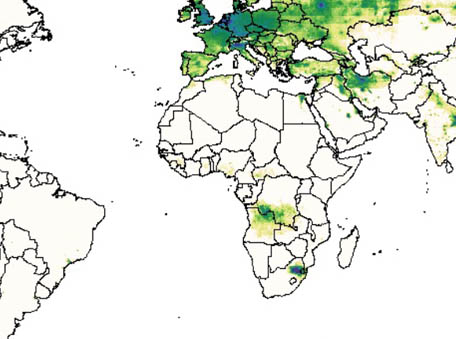 New global fine-scale changes in ambient nitrogen dioxide
New global fine-scale changes in ambient nitrogen dioxide Derived using Aura’s Ozone Monitoring Instrument (OMI) and fine resolution data from the ESA Sentinel 5 Precursor TROPOspheric Monitoring Instrument (TROPOMI).
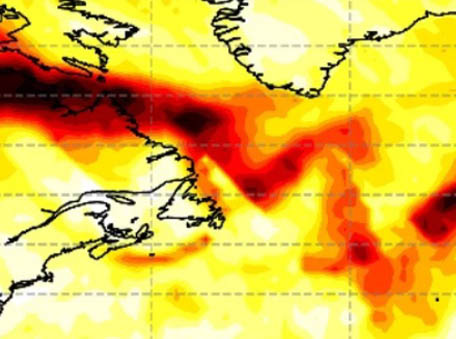 Observing the Climate Impact of Large Wildfires on Stratospheric Temperature
Observing the Climate Impact of Large Wildfires on Stratospheric TemperatureAura OMI UV-Aerosol Index (AI) and A-Train observations are used to reveal evidence that major wildfires can have a severe impact on the atmospheric temperature structure and short-term climate in the stratosphere.
 A step toward direct radiance assimilation in the UV spectrum
A step toward direct radiance assimilation in the UV spectrumDevelopment of an Ozone Monitoring Instrument (OMI) aerosol index (AI) data assimilation scheme for aerosol modeling over over cloudy regions and bright surfaces.
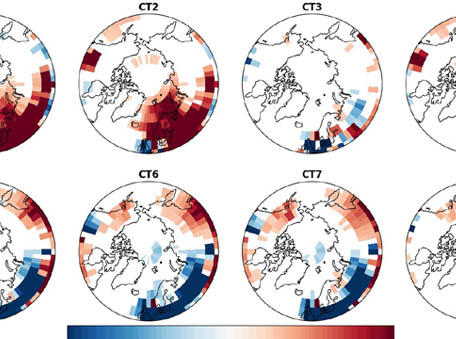 Influence of Springtime Atmospheric Circulation Types on the Distribution of Air Pollutants in the Arctic
Influence of Springtime Atmospheric Circulation Types on the Distribution of Air Pollutants in the ArcticUsing synergistic A-Train data (from Aura OMI, Aqua AIRS, and CALIPSO), this study provides the most comprehensive assessment so far of the sensitivity of springtime pollutant distribution to the atmospheric circulation types in the Arctic and also provides an observational basis for the evaluation of chemistry transport models.
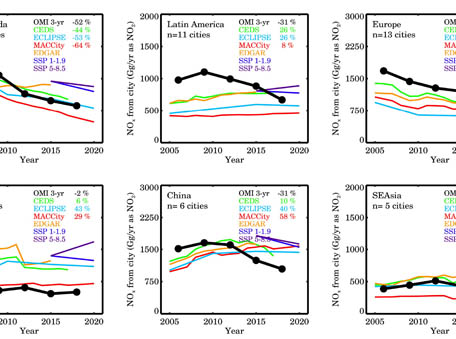 Aura OMI Nitrogen Dioxide Data Show Urban Trends
Aura OMI Nitrogen Dioxide Data Show Urban Trends Aura OMI nitrogen dioxide data show urban trends are consistent with those from bottom-up inventories in high-income countries, but not in low-moderate income countries
 Spatial and Temporal Variability in the Hydroxyl Radical
Spatial and Temporal Variability in the Hydroxyl RadicalUnderstanding the role of large-scale climate features and their influence on hydroxyl radical through its dynamical and photochemical drivers
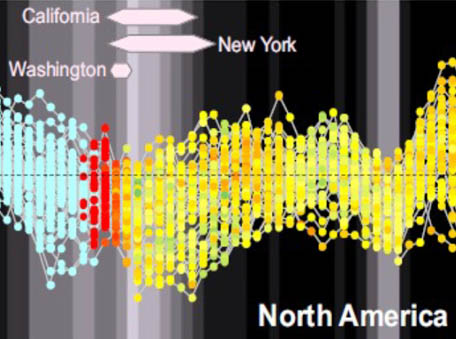 Predicting the effect of efforts to contain the spread of COVID-19
Predicting the effect of efforts to contain the spread of COVID-19Changes in spaceborne tropospheric nitrogen dioxide column concentrations, when used as a proxy of economic activity, can be a significant predictor for the deceleration of COVID-19 spread.
 Evaluating Drought Responses of Surface Ozone Precursor Proxies
Evaluating Drought Responses of Surface Ozone Precursor ProxiesUsing Aura OMI nitrogen dioxide and formaldehyde data to evaluate drought responses of surface ozone precursor proxies: Variations with land cover type, precipitation, and temperature
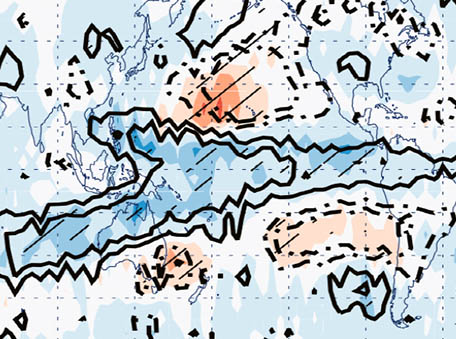 Using NASA Aura MLS and GMAO MERRA-2 data to resolve seasonal differences in lower stratospheric temperature, circulation, and composition due to the MJO
Using NASA Aura MLS and GMAO MERRA-2 data to resolve seasonal differences in lower stratospheric temperature, circulation, and composition due to the MJOLong-term, high-quality Aura Microwave Limb Sounder (MLS) data enabled research that explains the strong seasonal and regional variations in climatically-important lower stratospheric (LS) trace gases (e.g., O3 and H2O) that are associated with the Madden-Julian Oscillation (MJO) – an eastward moving weather disturbance that traverses the tropics within 30 to 60 days, on average.
 Solar activity and responses observed in Balmer lines
Solar activity and responses observed in Balmer lines Daily solar irradiance measurements from Aura Ozone Monitoring Instrument (OMI) and TROPOMI show that some prominent Fraunhofer lines behave differently from the majority of UV-visible spectral transitions. This finding may ultimately help in deciphering the complex stellar-activity patterns in the search for exo-planets, which requires precise characterization of intrinsic variability patterns of the hosting stars to discriminate planetary signals.
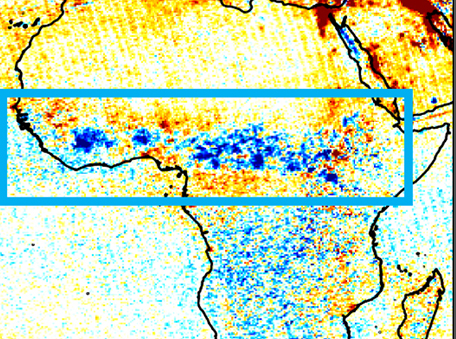 Reductions in nitrogen dioxide burden over north equatorial Africa from decline in biomass burning in spite of growing fossil fuel use
Reductions in nitrogen dioxide burden over north equatorial Africa from decline in biomass burning in spite of growing fossil fuel use Ozone Monitoring Instrument (OMI) and MODerate-resolution Imaging Spectroradiometer (MODIS) data reveal that a decline in biomass burning has led to lower dry season tropospheric NO2 concentrations in north equatorial Africa, counter to what is expected for economically growing low- and middle-income regions.
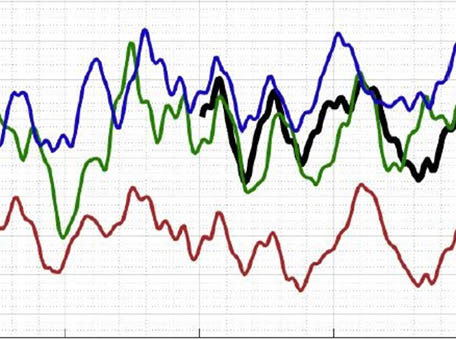 How atmospheric chemistry and transport drive surface variability of nitrous oxide and trichlorofluoromethane
How atmospheric chemistry and transport drive surface variability of nitrous oxide and trichlorofluoromethane Nitrous oxide is a greenhouse gas exhibiting long-term increases in its surface and atmospheric abundance, as a result of emissions from agricultural and industrial sources.
 Energetic particle precipitation and the quasi-biennial oscillation modulate Antarctic springtime chlorine partitioning and ozone loss
Energetic particle precipitation and the quasi-biennial oscillation modulate Antarctic springtime chlorine partitioning and ozone loss Energetic particle precipitation (EPP) – the flux of charged solar particles into Earth’s upper atmosphere – can drive large nitrogen oxide enhancements.
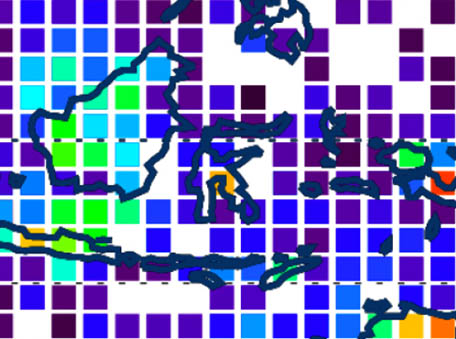 Ice injected into the tropical tropopause region by deep convection over the Maritime Continent
Ice injected into the tropical tropopause region by deep convection over the Maritime Continent Convective processes play a major role in controlling the abundances of cloud ice and water vapor in the tropical tropopause layer, which in turn strongly modulate climate. Despite their importance, these processes remain poorly represented in global climate models. Observations of the full diurnal cycle of cloud ice, closely linked to that of convection, are needed for model evaluation and refinement.
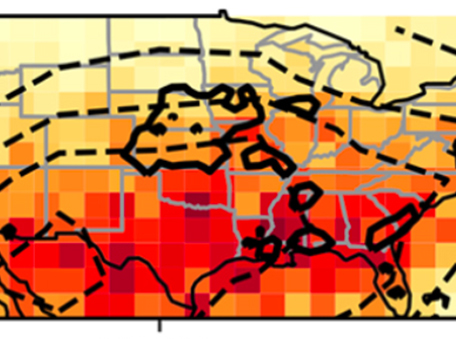 Influence of convection on stratospheric water vapor in the North American monsoon region
Influence of convection on stratospheric water vapor in the North American monsoon region Studies associate increases in stratospheric water vapor concentrations with considerable surface warming. This study indicates that convective moisture can be transported by the monsoon circulation and yield significant, large-scale water vapor enhancements.
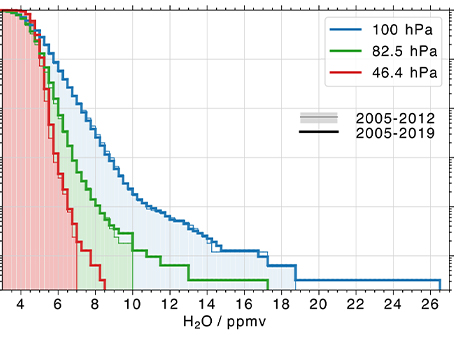 Extreme Outliers in Lower Stratospheric Water Vapor Over North America
Extreme Outliers in Lower Stratospheric Water Vapor Over North America MLS Observations Show Relation to Overshooting Convection Diagnosed From Colocated Aqua-MODIS Data
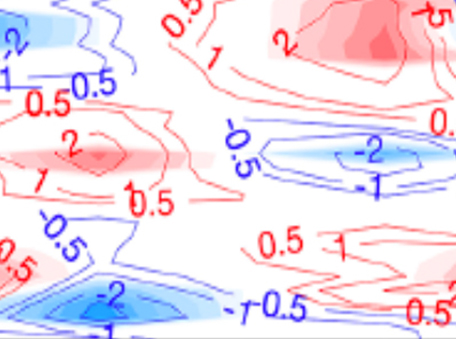 Seasonal stratospheric ozone trends over 2000-2018 derived from several merged data sets
Seasonal stratospheric ozone trends over 2000-2018 derived from several merged data sets Studying the seasonal dependence of stratospheric ozone trends in the past decades helps to understand variations and trends in the ozone layer.
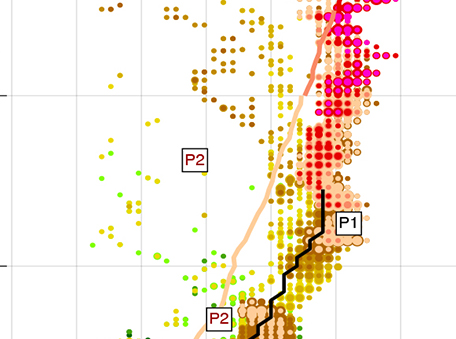 Plume from Australian fires influences stratospheric composition
Plume from Australian fires influences stratospheric composition An extraordinary complex of Australian fire-driven pyrocumulonimbus (pyroCb) storms at the end of 2019 (the most recent and largest of three such events in the Aura Microwave Limb Sounder, MLS, record) produced an unprecedented stratospheric plume of fire emissions that circled the globe twice.
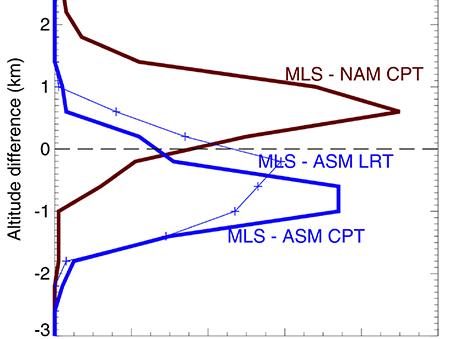 Assessment of Observational Evidence for Direct Convective Hydration of the Lower Stratosphere
Assessment of Observational Evidence for Direct Convective Hydration of the Lower Stratosphere Understanding the processes that control stratospheric water vapor, as well as the causes of observed stratospheric humidity variations, is the focus of active scientific research.